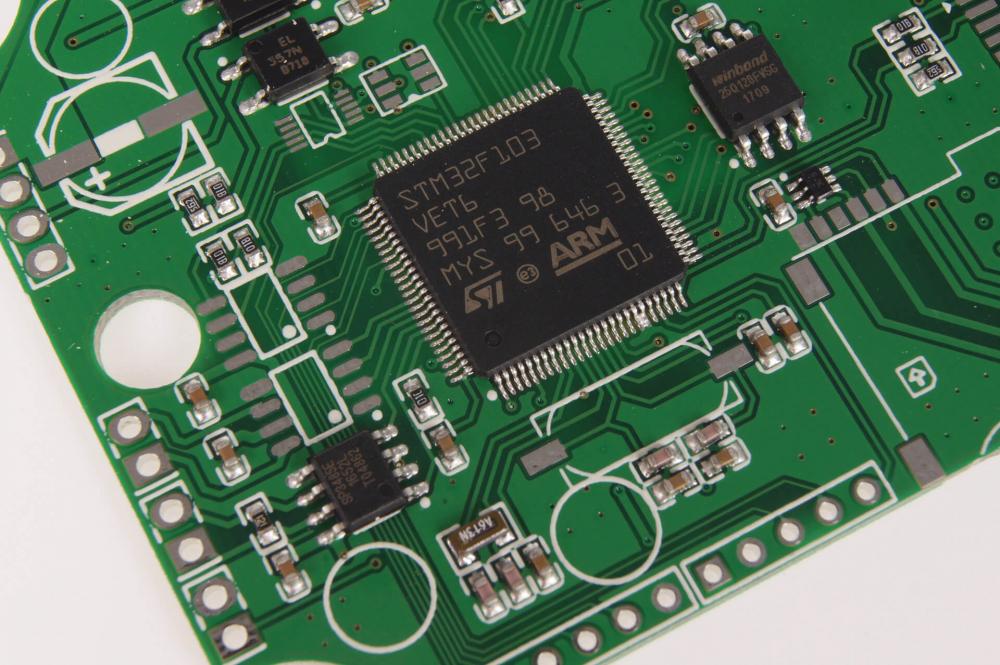About us
FASTPCBA Co.,Ltd
-
 Building 1, Senyang Electronic Technology Park, Guangming High-tech Park, Yutang Street, Guangming District, Shenzhen City.
Building 1, Senyang Electronic Technology Park, Guangming High-tech Park, Yutang Street, Guangming District, Shenzhen City.
-
 F:86-13418481618
F:86-13418481618
-
 pcba13@fastpcba.cn
pcba13@fastpcba.cn
 date:2019-05-20 14:05:00
date:2019-05-20 14:05:00
PCB assembly signal integrity design method
As the output switching speed of integrated circuits increases and the density of PCB boards increases, Signal Integrity has become one of the issues that must be concerned with the design of high-speed digital PCBs. The parameters of components and PCBs, and the layout of components on the PCB. Factors such as the wiring of high-speed signal lines can cause signal integrity problems.

How to fully consider the signal integrity factors in the PCB design process and take effective control measures has become a hot topic in the PCB design industry today.
Signal integrity issues: Good signal integrity means that the signal responds with the correct timing and voltage level values when needed. Signal integrity issues can cause or directly introduce signal distortion, timing errors, incorrect data, address and control lines, and system malfunctions, even system crashes.
PCB layered design.
When doing PCB layering design, the following rules should be followed:
1. The reference surface should preferably be planar. Both the power supply and the ground plane can be used as reference planes, and both have a certain shielding effect.
2. Layered circuits and analog circuits. Where design costs permit, it is best to arrange the digital and analog circuits on different layers. If it must be arranged on the same wiring layer, it can be adopted by ditching, adding grounding lines, dividing lines, etc. The analog and digital power and ground must be separated and must not be mixed
.
3. The key signal traces of adjacent layers do not cross the partition.
4. There must be a relatively complete ground plane below the component surface.
5. High-frequency, high-speed, clock and other key signal lines should have adjacent ground planes.
When designing a PCB, you must first understand the design information of the entire circuit board, which mainly includes:
1.The number of components, components size, components package, chip rate, PCB is divided into low-speed medium-speed high-speed area, which is the interface input and output area;
2. The overall layout requirements, components layout location, the presence or absence of high-power components, chip components heat dissipation special requirements;
3. Type and rate of signal lines, impedance control requirements of signal lines, bus speed trend and driving conditions, key signals and protection measures;
4.The type of power supply and ground, noise tolerance requirements for power and ground, power supply and ground plane settings and segmentation;
5. The type and rate of the clock line, the source and destination of the clock line, the clock delay requirement, and the longest routing requirement.
PCB layout design
The key to printed circuit board signal integrity design is layout and routing. If the PCB size is too large and the components distribution is dispersed during the layout, the transmission line may be long, resulting in increased impedance, reduced noise immunity, and increased cost. If the components are placed in a concentrated manner, the heat dissipation is not good, and adjacent traces are prone to coupling crosstalk. Therefore, it is necessary to layout according to the circuit function unit, taking factors into consideration such as electromagnetic compatibility, heat dissipation and interface.
The following principles should be followed when making the overall layout:
1.Functional partition layout
2. Arrange the functional circuit units according to the flow of the circuit signal to keep the signal flow in the same direction.
3. Center on the core components of each functional circuit unit, and other components are laid out around it.
4. As much as possible to shorten the connection between high-frequency components
5. Components that are susceptible to interference should not be too close to each other, and input and output components should be kept away.
PCB layout design
When routing PCBs, classify all signal lines first. First, the clock line, the sensitive signal line, and the high-speed signal line are arranged. After ensuring that the vias of such signals are less enough and the distribution parameters are good, a general unimportant signal line is disposed.
The general principles to follow when wiring are:
1. Try to use low-density wiring design, and the signal traces should be as unanimous thick as possible, which is good for impedance matching.
2. Try to avoid the adjacent wires of the input and output terminals and the parallel wiring of long distances.
3. The width of the route on the PCB should be uniform, and the mutation of the line width cannot occur.
4. Minimize the area of the current loop.
5. Minimize the length of the wire and increase the width of the wire, which is beneficial to reduce the impedance of the wire.
6. For the switch control signal, the number of signal PCB routes that change the state at the same time should be minimized.
 Building 1, Senyang Electronic Technology Park, Guangming High-tech Park, Yutang Street, Guangming District, Shenzhen City.
Building 1, Senyang Electronic Technology Park, Guangming High-tech Park, Yutang Street, Guangming District, Shenzhen City.
 F:86-13418481618
F:86-13418481618
 pcba13@fastpcba.cn
pcba13@fastpcba.cn